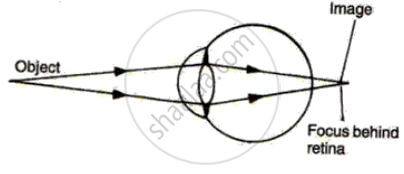Advertisements
Advertisements
Question
State the Function:
Choroid coat in the eye
Solution
Choroid layer with many capillaries forms the nutritive layer of the eye. The extended choroid layer forms the pigmented muscular curtain called the iris. The aperture in the centre through which light enters the aperture is called the pupil.
APPEARS IN
RELATED QUESTIONS
Explain, why a normal eye is not able to see distinctly the objects placed closer than 25 cm, without putting any strain on the eye.
Match the following:
| Column I | Column II |
| (i) Myopia | (a) Converging power of eye lens becomes low |
| (ii) Hypermetropia | (b) Converging power of eye lens remains the same |
| (c) Converging power of eye lens becomes high |
Name the part of the eye:
which changes the focal length of eye-lens.
Name that part of the eye which is equivalent to the photographic film in a camera.
Give the scientific names of the following parts of the eye:
a hole in the middle of the iris.
Why does it take some time to see objects in a dim room when you enter the room from bright sunshine outside?
What are rods and cones in the retina of an eye? Why is our night vision relatively poor compared to the night vision of an owl?
The human eye forms the image of an object at its ______.
Fill in the following blank with suitable word:
Having two eyes enables us to judge.................more accurately.
Name the following:
The photoreceptors found in the retina of the eye.
Give scientific reason:
We cannot clearly see an object kept at a distance less than 25 cm from the eye.
State the main functions of the following:
Seminal Vesicles
Give the main function of the following:
Lachrymal glands
The diagram alongside represents a certain defect of vision of the human eye.
(i) Name the defect.
(ii) Describe briefly the condition in the eye responsible for the defect.
(iii) Redraw the figure by adding a suitable lens correcting the defect. Label the parts through which light-rays pass.
(iv) What special advantage do human beings derive in having both eyes facing forward?

Choose the correct answer.
Which one is the photoreceptor _____________
What is meant by power of accommodation of the eye?
Choose the Odd One Out:
Name the part of the eye which gives colour to the eyes.
Eyes of the nocturnal birds have large cornea and a large pupil. How does this structure help them?
